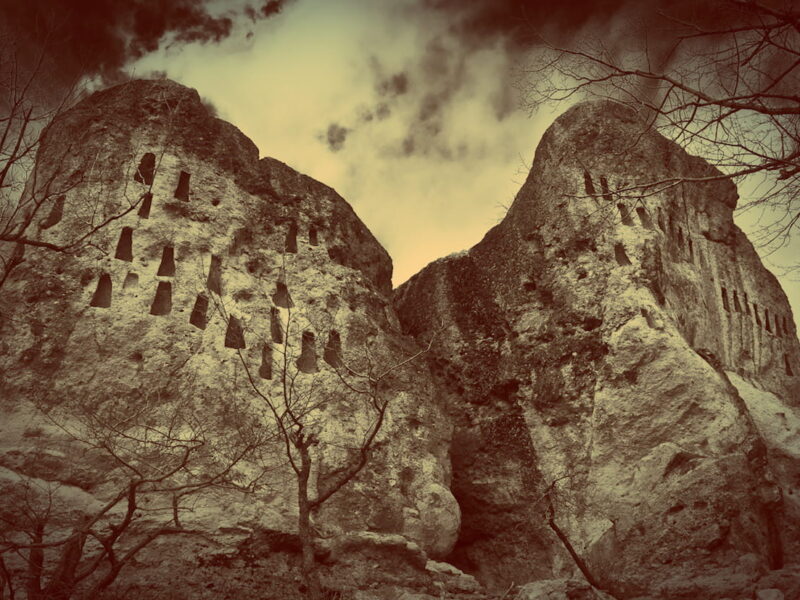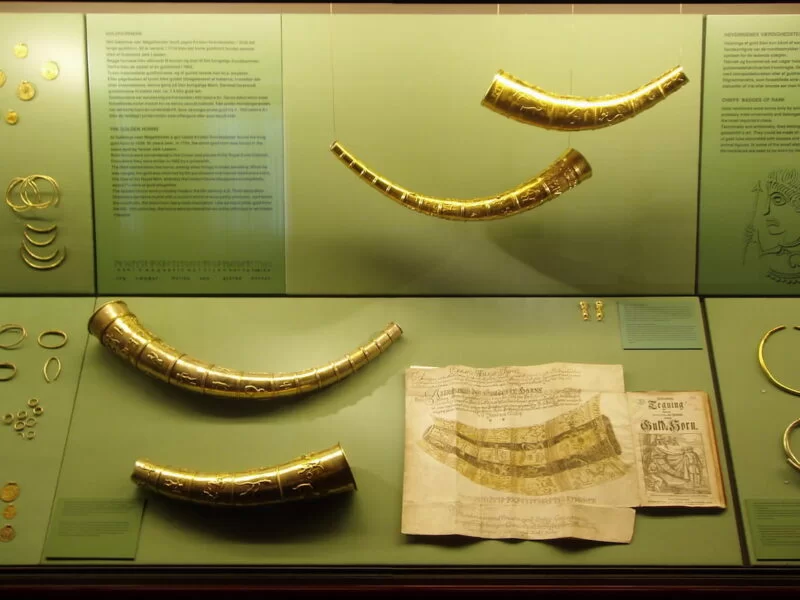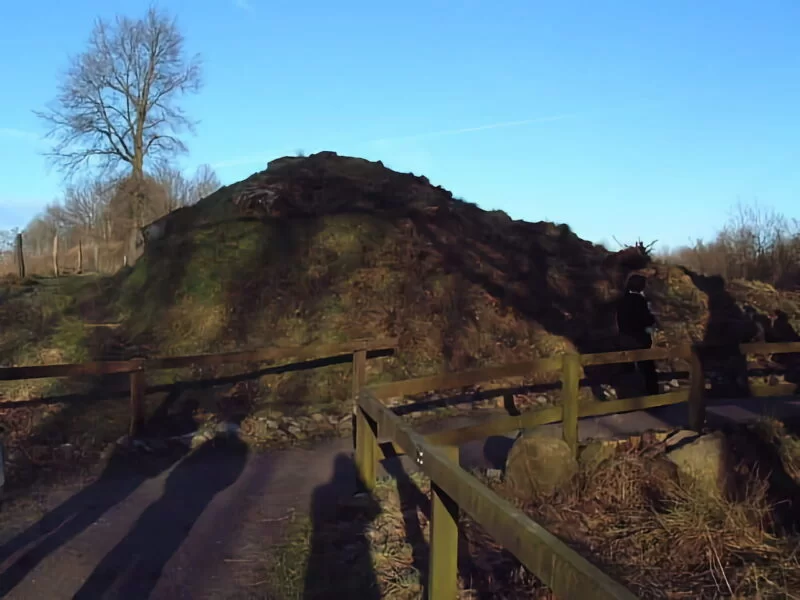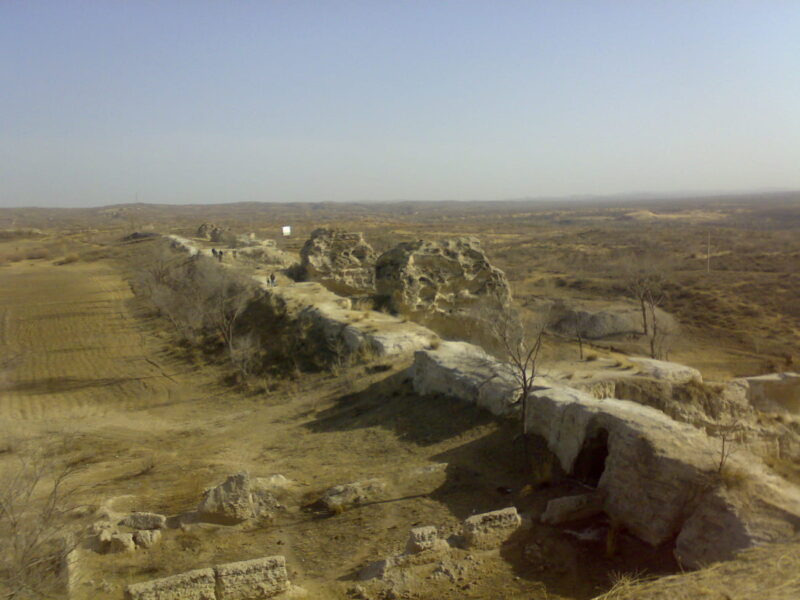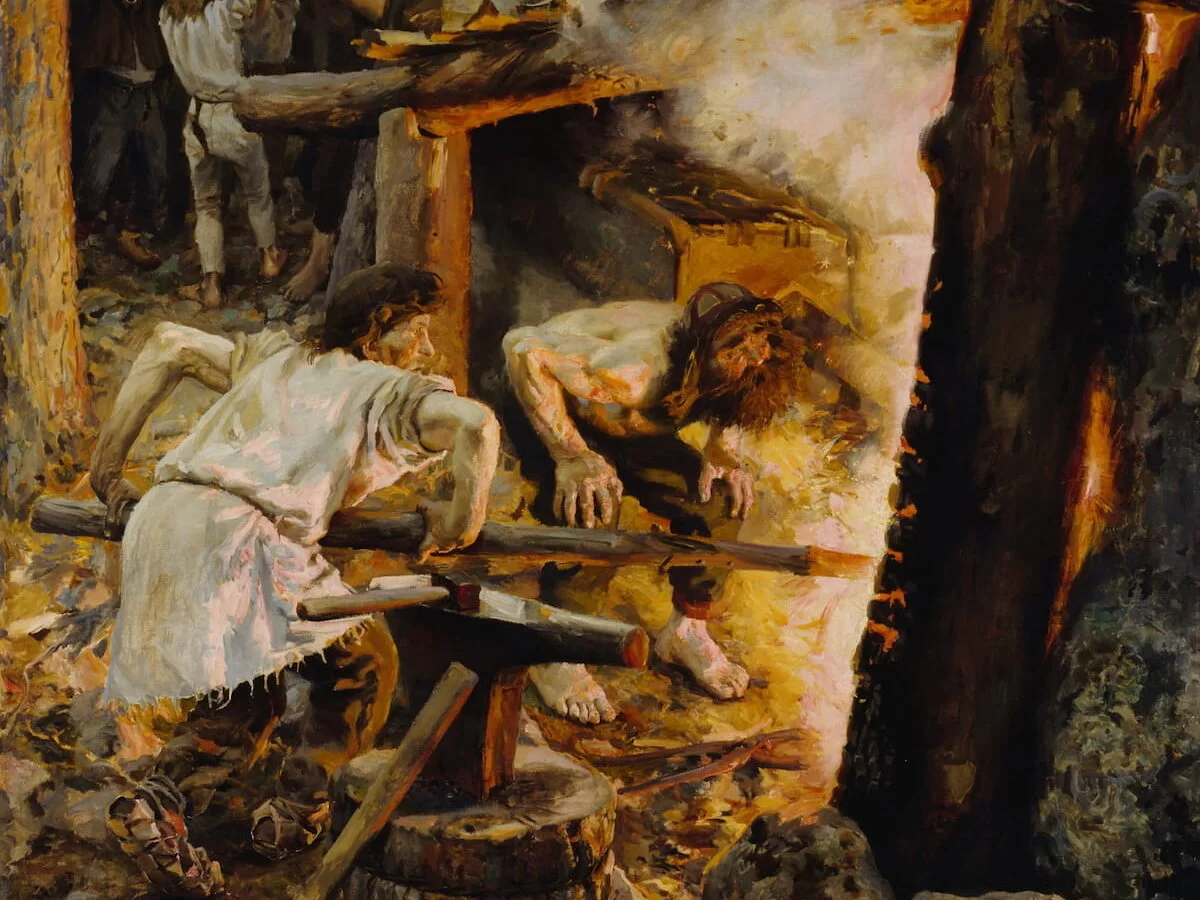The isolated island of Öland, off the southeastern coast of Sweden, holds within its windswept landscape the eroded remains of several fornborgs, circular stone fortifications built during the Iron Age. At least 15 are known.
In 2011, archaeologists focused their attention on one of these enclosures, known as Sandby Borg, located two kilometers from the village of Södra Sandby. Aerial photographs revealed what appeared to be the ruins of 53 houses nestled within its oval stone walls.
An initial inspection detected signs of looting, prompting further investigations. Fieldwork with metal detectors uncovered something astounding: caches of jewelry and gold coins hidden among the debris, dating from the 5th century AD. These were no ordinary treasures, as there were also exquisite brooches and pendants that bore the marks of the wealth and status of the aristocracy of the Migration Period.
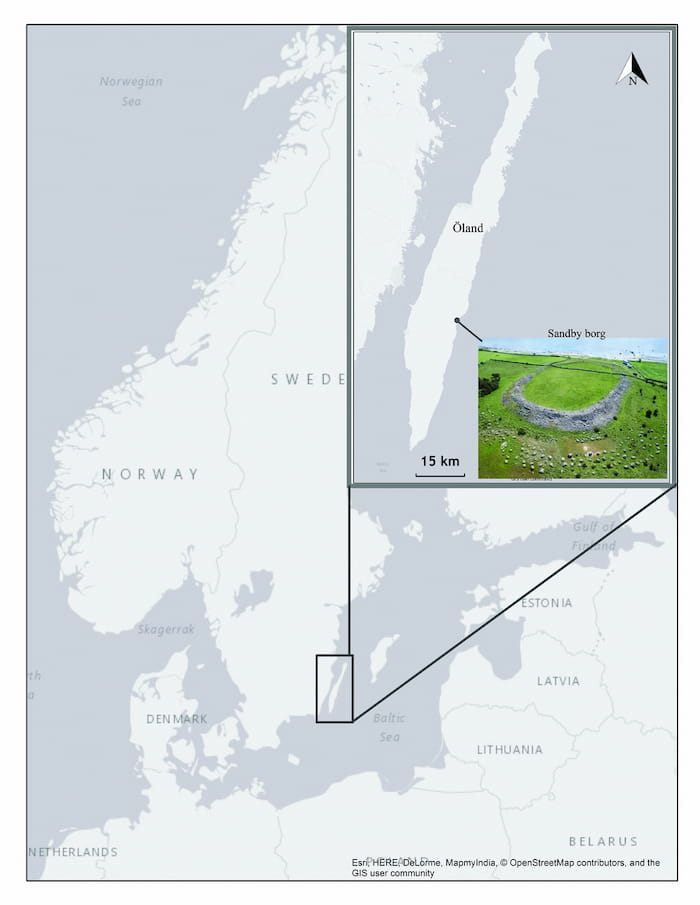
Sandby Borg held deep mysteries beneath its surface. Excavations began under the direction of archaeologists from the Kalmar County Museum, Helena Victor and Ludvig Papmehl-Dufay. In the first year, another incredible discovery was made: skeletons were unearthed inside several houses.
But these were not graves. Men, women, and children lay where their lives had been brutally cut short. No one had bothered to bury the bodies. It was a chilling scene, frozen in time, offering an extremely rare glimpse into the gruesome violence of a massacre.
Excavations in subsequent years uncovered more bodies, whose bones bore savage wounds inflicted by blades and blunt objects. These were not war casualties, but methodical executions.
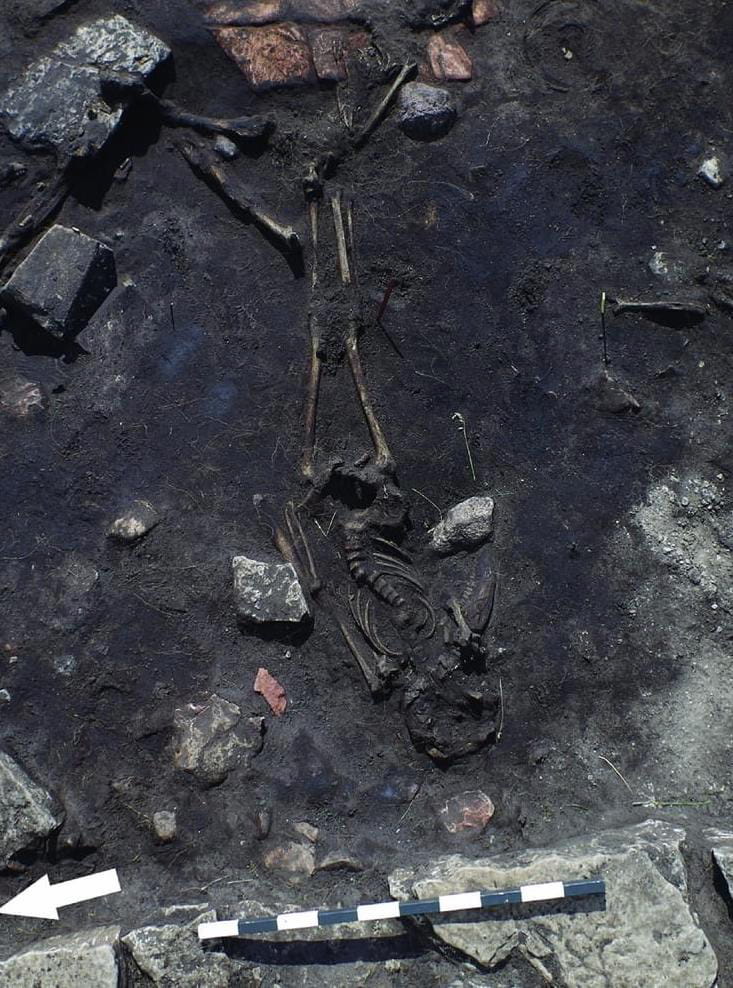
Why did these people—young and old, women dressed in their finest clothes—meet such a dark fate? By 2017, more than 9% of the fort’s interior had been excavated, and three of the 53 homes had been unearthed. Each campaign reveals more pieces of this puzzling story of destruction.
The meticulous analysis of the remains by osteologists Anna Kjellström and Clara Alfsdotter has unveiled secrets locked in the bones. So far, at least 26 bodies have been found, ranging from young children to the elderly. Most were locals, but some originated hundreds of kilometers away.
The houses also contained everyday objects mixed in with the carnage: pottery, tools, iron utensils. But other more prestigious items revealed Sandby Borg’s former prosperity: jewelry, glass beads, Roman gold coins.
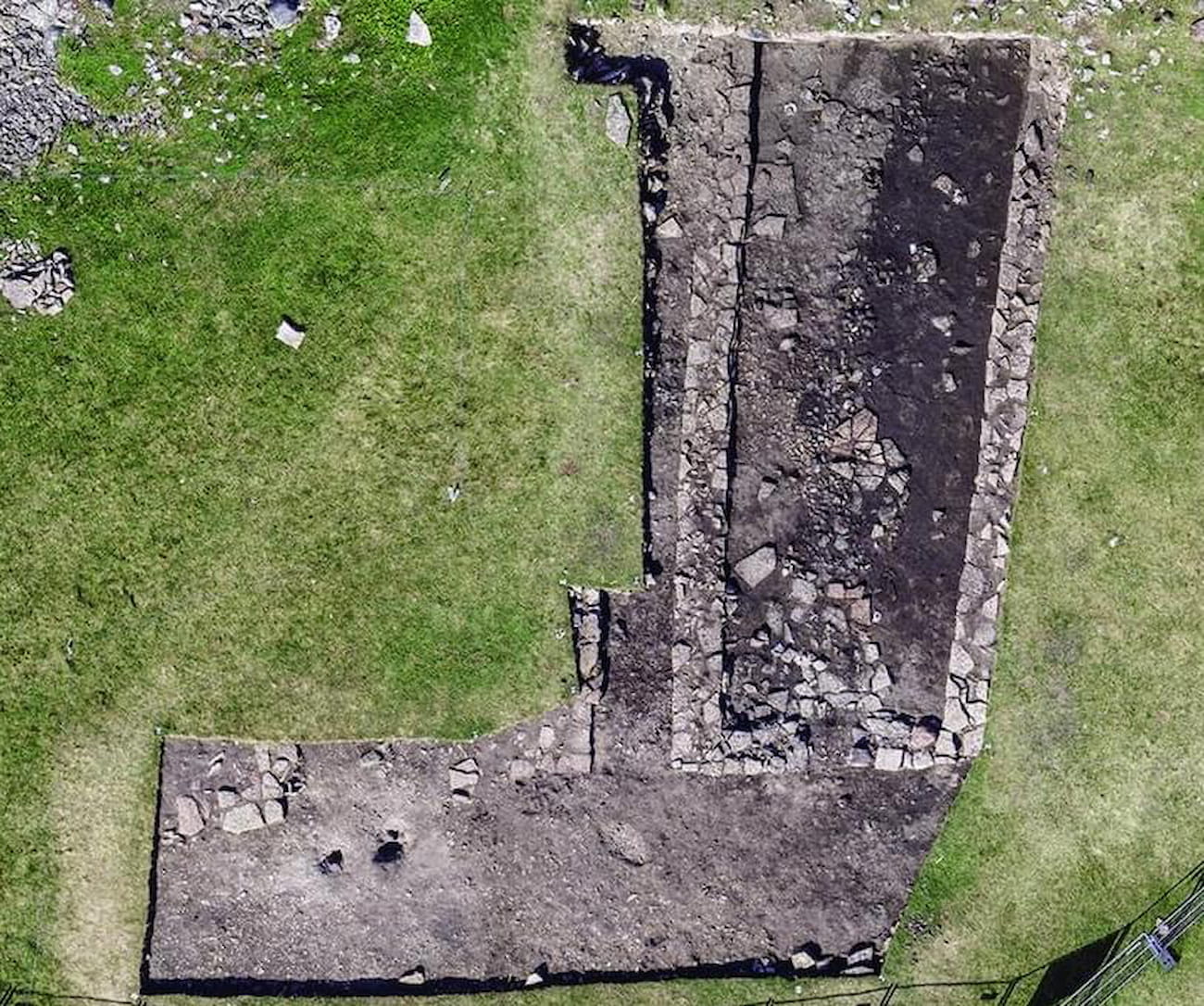
Two gold brooches featured motifs related to southern Scandinavian styles from around 450-510 AD. One of the Roman coins, a solidus, was hidden in a post hole. Researchers believe that those who lived there had been mercenaries in the Roman army.
Sandby Borg was built around 400 AD, one of at least 15 circular forts erected on Öland. Constructed near the coast, its curved dry-stone wall enclosed 5,000 square meters, with imposing towers guarding four gates spaced at the cardinal points. Life inside was vibrant.
The houses radiating from the central block had plastered walls, windows, and doorways, with central hearths and raised sleeping areas. Craftsmen and merchants lived in cozy homes, surrounded by pens for livestock. The fertile farmland nearby provided grain and flax. It was a self-sufficient fortress whose inhabitants were isolated from the turmoil ravaging continental Europe.
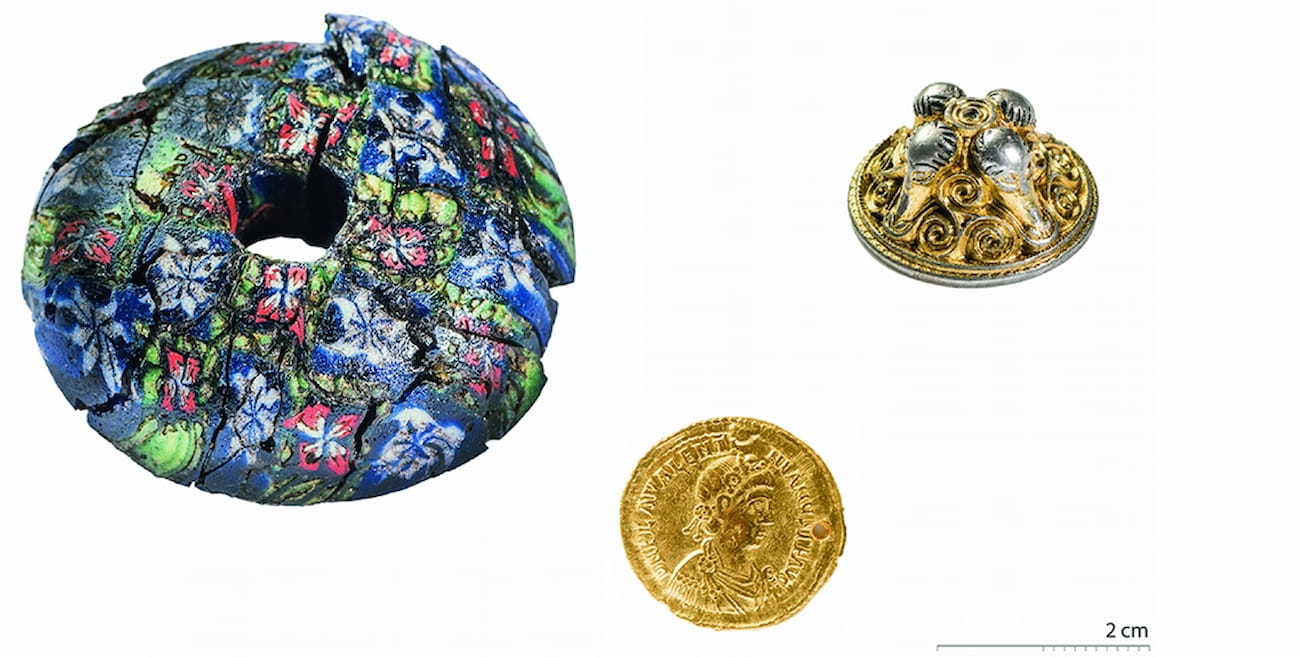
But peace eventually broke down, likely sometime around 480 AD. Archaeologists speculate that the massacre may have coincided with the climatic changes of the late 4th century AD, which caused crop failures, famines, and unrest. The apparent wealth of Sandby Borg may have made it a target for marauders.
Familiar passageways soon became scenes of horror as the attackers unleashed carnage on the settlement. Those who remained must have fled to nearby villages with the terrifying story. But why did no one return to bury the dead?
The secrets of Sandby Borg remained hidden for over a millennium. Over time, its walls collapsed and merged with the landscape, and vegetation slowly reclaimed the houses. Centuries blurred the memories of those terrible days into local folklore.
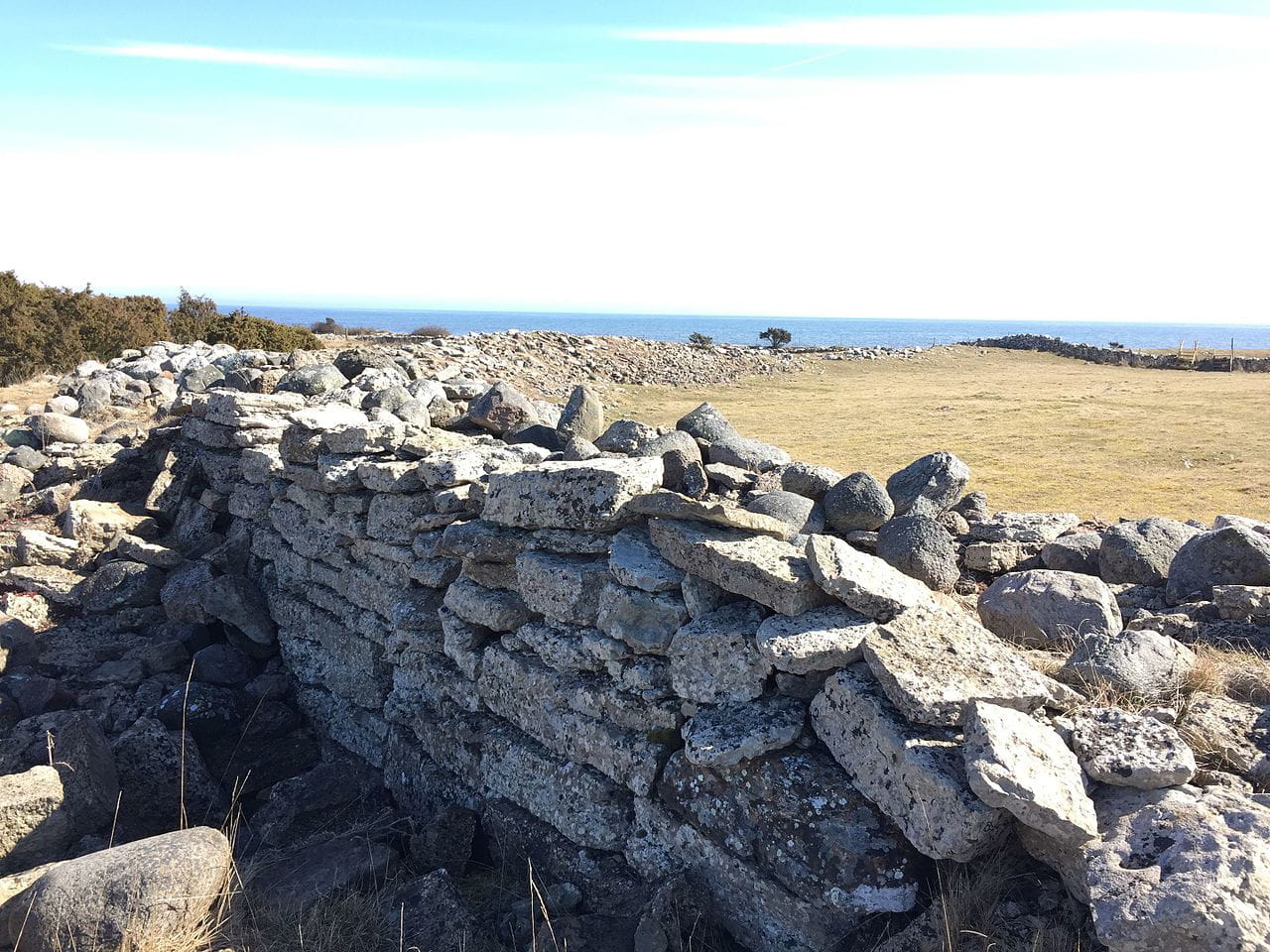
It became just another grass-covered mound on the plains of Öland, occasionally attracting treasure hunters. An ancient local legend had already warned of something terrible at Sandby Borg, but before the discovery, no one knew what.
The rediscovery in 2011 rekindled interest in the true story of Sandby Borg’s demise. Each year, new excavations uncover more layers of this Nordic Pompeii frozen in time. But some mysteries may never be solved.
Today, the highly eroded oval stone wall still reaches a height of nearly 3 meters of the original 5, enclosing an area of approximately 5,000 square meters, with a width of 4 meters. Three gates are visible as shallow depressions in the wall.
This article was first published on our Spanish Edition on September 28, 2023: Sandby Borg, el lugar donde los arqueólogos encontraron una espeluznante escena de la Edad del Hierro congelada en el tiempo
SOURCES
Alfsdotter, C., Papmehl-Dufay, L., & Victor, H. (2018). A moment frozen in time: Evidence of a late fifth-century massacre at Sandby borg. Antiquity, 92(362), 421-436. doi:10.15184/aqy.2018.21
Sandby Borg (Sitio Oficial)
Wikipedia, Sandby borg
Discover more from LBV Magazine English Edition
Subscribe to get the latest posts sent to your email.




